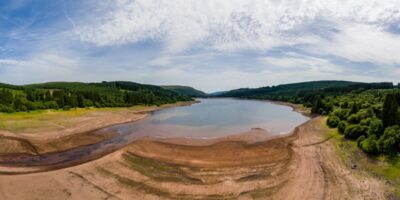The omnipresent threat of climate change is growing. Its effects are evident in the increasing fragility of food and water security, and erratic meteorological phenomena. This has led to the development of Climate Adaption Studies (CAS) to build resilience against climate change.
What are Climate Adaption Studies?
CAS focus on furthering our understanding of present and future environmental conditions in an interdisciplinary manner. This improved understanding serves as the foundation for evaluating and recommending adaptive measures for climate change.
The interdisciplinary nature of the subject weaves in both the hard sciences (for example, ecology and geology) as well as social sciences (such as sociology and economics). The creation of new knowledge or solutions is made possible through a diverse team that brings relevant knowledge across disciplines.
What data are needed for CAS, and what are some methods used for analysis?
Since CAS focus on improving resilience of people and their environments, it is important to first determine which assets and communities are most vulnerable to climate change. Some examples of data include past and present environmental data, as well as key information on critical assets or communities. These may be available from existing datasets from the government or facility owners, or require additional fieldwork and consultations.
Collectively, these data are processed to generate insights for decision-making. This allows us to identify threats to key assets and communities, prioritise those most in need of protection, and recommend adaptive measures. Tools employed for such analyses include matrices, geographical information systems (GIS), as well as cost-benefit analysis (CBA) and multi-criteria decision analysis (MCDA) to compare the effectiveness of different adaptive measure options.
Are scientists the only people involved in CAS?
No! Depending on the study focus, researchers have to engage stakeholders such as government bodies, businesses, grassroots organisations and the public to ensure that the measures churned out are sensitive to the context. In these engagements, the researchers seek to gain insights on what is vulnerable and critical for protection, as well as an understanding on any current or future plans that could impact the recommendations of the study.
How long is a typical CAS project, and how soon can we see the benefits of the adaptive measures?
Climate-related risks are complex. A comprehensive CAS project could take three to four years to complete. Given the uncertainty of climate change, studies often require additional monitoring, analysis and consultations before the implementation of recommended measures. With lead time often needed for adaptive measures to be put in place, one can expect a wait of five to ten years from the start of a CAS before seeing the fruits of labour.
Bridging the equality gap
Climate adaptation requires substantial financial and technical resources. Low income communities are most vulnerable to climate change, as most depend on the environment for their livelihoods. More international and regional efforts should be taken to bridge the equality gap of such communities, and cultivate their resilience to climate change.
Watch these videos to learn more about…
Cost-benefit analysis
Geographical information system
Multi-criteria decision analysis








